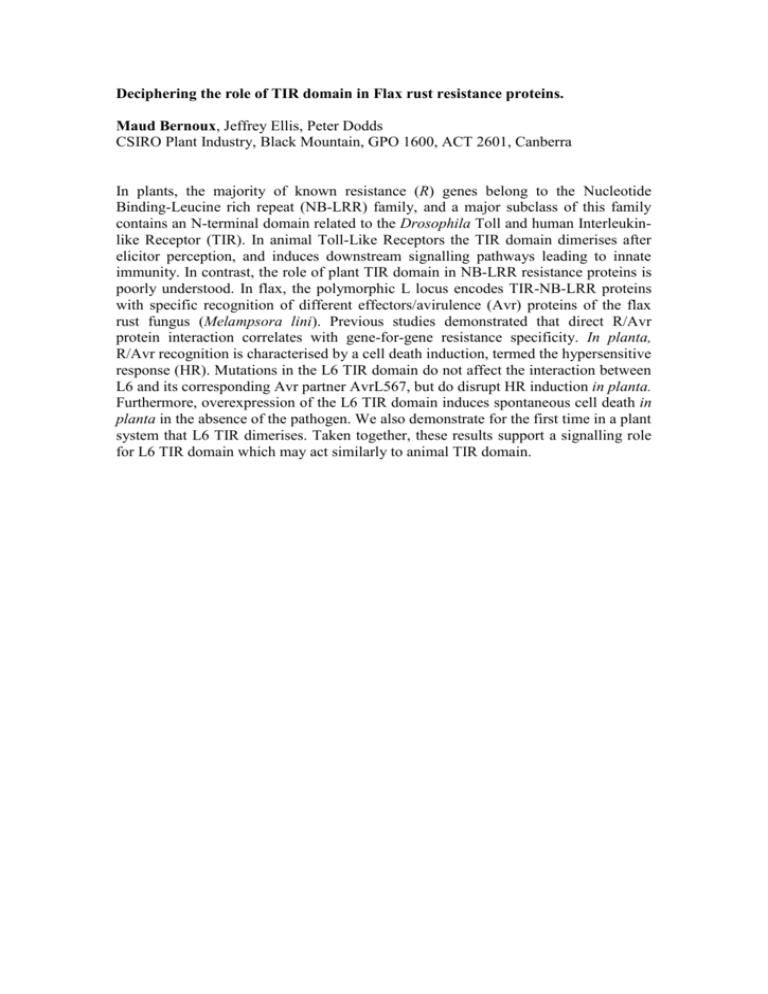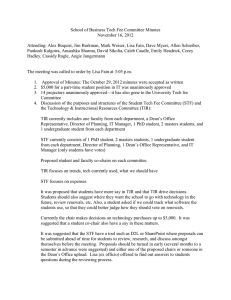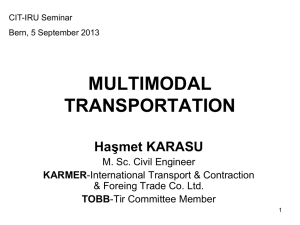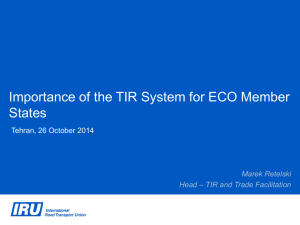Deciphering the role of TIR domain in plant resistance proteins
advertisement

Deciphering the role of TIR domain in Flax rust resistance proteins. Maud Bernoux, Jeffrey Ellis, Peter Dodds CSIRO Plant Industry, Black Mountain, GPO 1600, ACT 2601, Canberra In plants, the majority of known resistance (R) genes belong to the Nucleotide Binding-Leucine rich repeat (NB-LRR) family, and a major subclass of this family contains an N-terminal domain related to the Drosophila Toll and human Interleukinlike Receptor (TIR). In animal Toll-Like Receptors the TIR domain dimerises after elicitor perception, and induces downstream signalling pathways leading to innate immunity. In contrast, the role of plant TIR domain in NB-LRR resistance proteins is poorly understood. In flax, the polymorphic L locus encodes TIR-NB-LRR proteins with specific recognition of different effectors/avirulence (Avr) proteins of the flax rust fungus (Melampsora lini). Previous studies demonstrated that direct R/Avr protein interaction correlates with gene-for-gene resistance specificity. In planta, R/Avr recognition is characterised by a cell death induction, termed the hypersensitive response (HR). Mutations in the L6 TIR domain do not affect the interaction between L6 and its corresponding Avr partner AvrL567, but do disrupt HR induction in planta. Furthermore, overexpression of the L6 TIR domain induces spontaneous cell death in planta in the absence of the pathogen. We also demonstrate for the first time in a plant system that L6 TIR dimerises. Taken together, these results support a signalling role for L6 TIR domain which may act similarly to animal TIR domain.











